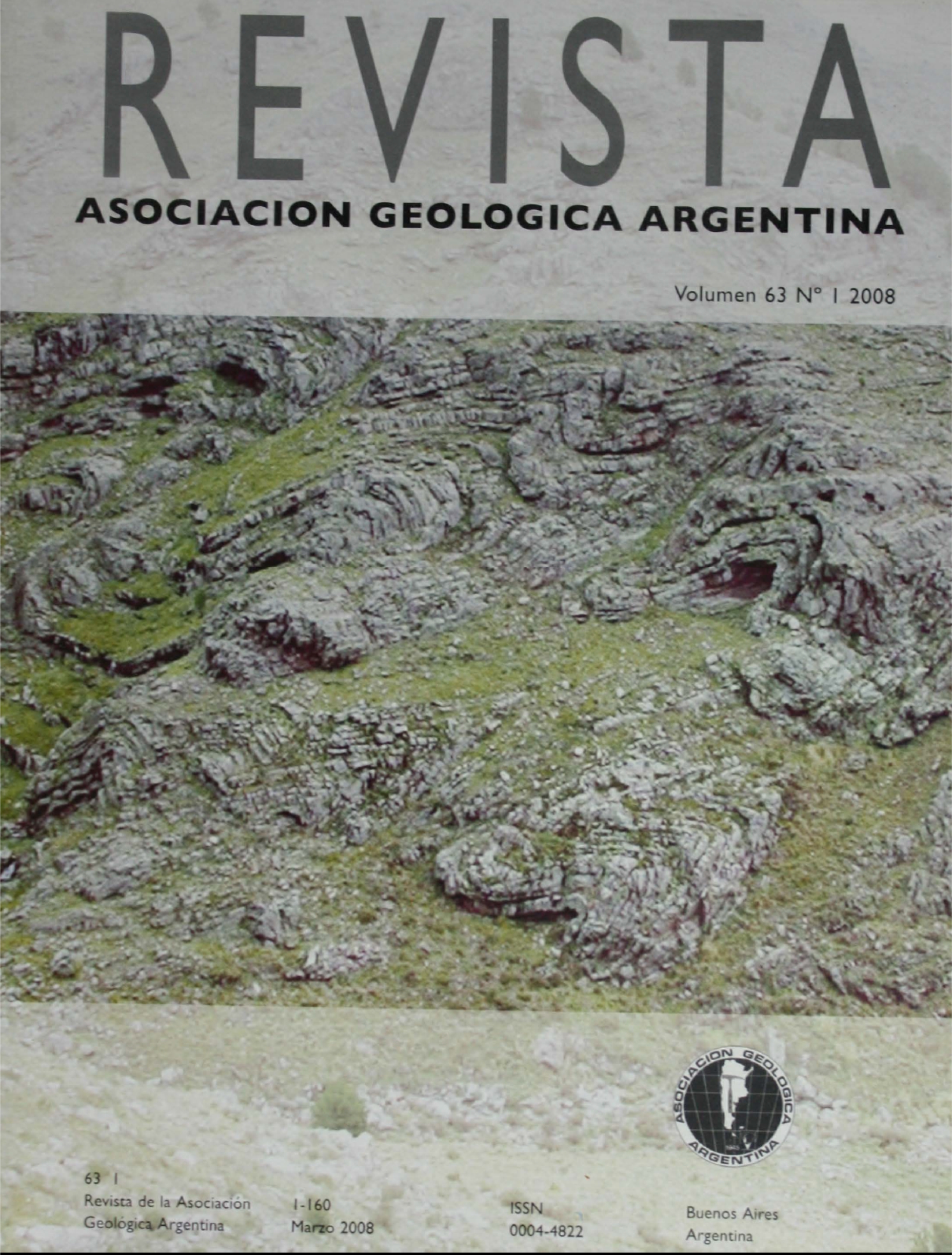Geology of Cerro Guanaquero region, Diamante River, Mendoza
Main Article Content
Abstract
This study presents new data on a poorly known sector of the Cordillera Principal of Mendoza, in the headwaters of the Diamante river basin in Cerro Guanaquero and surrounding areas. The exposed units are divided in four main groups: marine and continental sedimentary Mesozoic sequences intensively folded and thrust, intermediate intrusives and volcanic rocks of Neogene age, Pliocene to Recent volcanic rocks of intermediate to basic composition, and unconsolidated Quaternary deposits. The Cerro Guanaquero, a Quaternary stratovolcano intensively eroded by Pleistocene glaciers, with its 4,841 meters is the most prominent orographic feature of the region. It is constituted essentially by pyroxene to biotitebearing gray porphyritic andesites. Pyroclastic deposits, volcanic agglomerates, ignimbrites, and basalts are interbedded with the andesitic flows. The K-Ar date by whole-rock method of an andesite yielded an age of 1.4 ± 0.1 Ma. The Andean deformation begins as a thinskinned fold and thrust belt, with detachment folds in the western areas that advanced to the east as propagation folds. The compression ended west of the 69º47´W with the inversion of the Mesozoic rift normal faults. Along this meridian the most important fault of the region is found, which has been correlated with the Malargüe fault, well developed south of the study area. This fault bounds the thin-skinned Aconcagua fold and trust belt, and the thick-skinned Malargüe fold and trust belt, controlled by tectonic inversion. The volcanism was very intense in the Pliocene and Quaternary, associated with a steepening of the subducted oceanic slab, at the time that the region was passively uplifted. The resistance of the volcanic rocks to the erosion compared with the Mesozoic sedimentary rocks, plus the high erosive efficiency of the Pleistocene's glaciers, gave place to the inversion of the relief. The erosion rate was exceptional, reaching at least 7 cm/100 years during the Quaternary.
Article Details

This work is licensed under a Creative Commons Attribution-NonCommercial 4.0 International License.
Nota de copyright
Los autores conservan los derechos de autor y garantizan a la revista el derecho de ser la primera publicación del trabajo licenciado según una licencia de atribución Creative Commons que permite a otros compartir el trabajo con el reconocimiento de la autoría y de la publicación en la que se publicó por primera vez.
Declaración de privacidad
Los nombres y direcciones de correo electrónico introducidos en esta revista se usarán exclusivamente para los fines declarados por esta revista y no estarán disponibles para ningún otro propósito u otra persona.

